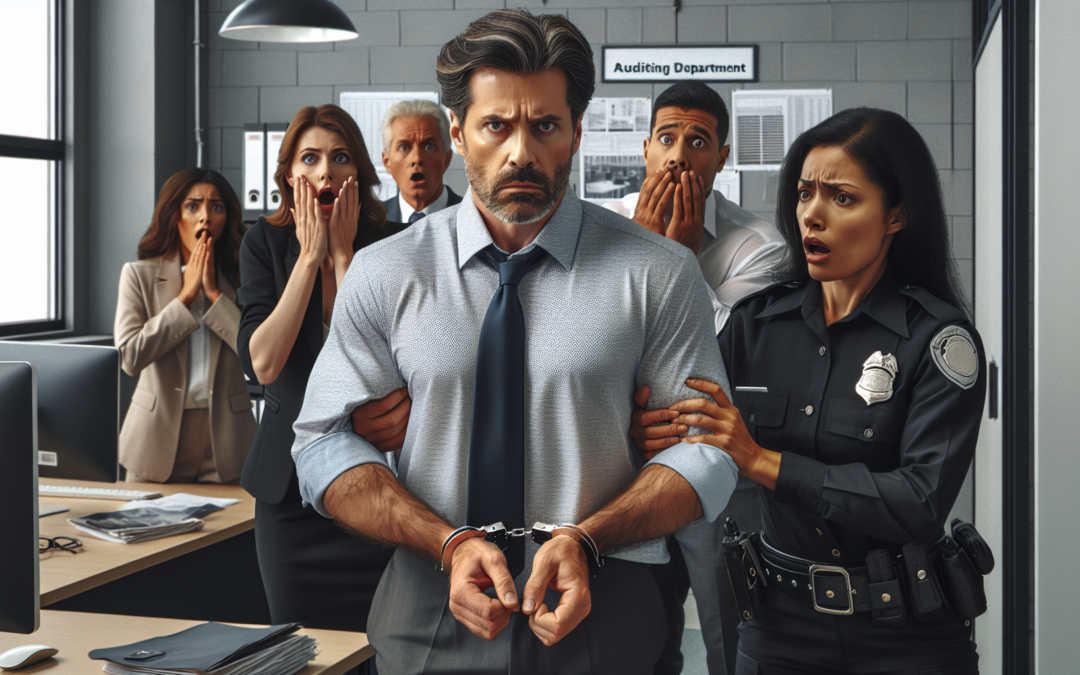The Unyielding Pressure of Law Enforcement: Navigating the Balance Between Safety and Rights
In an era defined by smartphones and social media, the work of American police officers has evolved substantially. While the principles of serving and protecting hold as true now as ever, the context in which these mandates are executed has changed dramatically, thanks in part to the ceaseless gaze of public scrutiny.
The video under examination examines an altercation between law enforcement and a First Amendment auditor named Deontay, and it’s a gripping insight into today’s complex dynamics of policing.
As John’s analysis in the latest episode of The John Ligato Show demonstrates, the challenges confronting officers today are immense. The consequences of their split-second decisions can be life-changing—for both the individuals involved and the officers themselves. It’s essential to remember the responsibilities these men and women undertake daily and the immense stress that accompanies it.
When Deontay, a First Amendment auditor, approaches officers, camera in hand, he’s not merely documenting the scene; he’s testing the boundaries of constitutional rights. His video captures a scenario filled with tension and potential ramifications—moments that demand an officer’s utmost clarity and discernment. One can see the officers’ faces, laden with the weight of countless “what-ifs.”
The Decision-Making Crucible
Imagine standing at the forefront of unpredictability, where any decision can fall under intense public scrutiny. This potential fuels one of the most significant pressures officers face: the weaponization of transparency. Transparency is critical but can also serve as a tool for some activists eager to catch law enforcement in moments of perceived weakness or error, which can then be broadcast worldwide within seconds.
Conforming to such high standards, while maintaining peace and safety, can sometimes lead to errors in judgment—a reality that all law enforcement officers must grapple with. This scrutiny was evident when officers conditionally detained Deontay for his behavior, citing their standing perspective that his actions seemed antagonistic and potentially harmful.
The Encounter: Tensions Rise
From the footage reviewed, the situation escalated quickly. Deontay’s persistence in filming the officers caught the high-strung atmosphere prevalent around policing today. The officers had to evaluate whether Deontay posed a threat or if his intent simply lay between practicing his rights and pushing boundaries.
Detaining him was neither an easy decision nor one taken lightly—it was a step the officers deemed necessary given the context of his behavior. Often, non-compliance or resistive behavior can catalyze decisions that entail detaining an individual momentarily to gain control and maintain safety.
Public Perception and Media Manipulation
Public reaction leans heavily on visually compelling narratives. One clip taken out of context can incite rage and misunderstanding, perpetuating a cycle that erodes trust between the community and the police—erosion that reform advocates and policymakers often seek to address.
The rise of First Amendment auditors brings an interesting element into this equation. On one hand, they serve an essential role in ensuring accountability. However, on the flip side, their interventions can disturb routine operations, adding layers of stress for officers already burdened with multifaceted crime-fighting tasks.
John Ligato’s sober analysis of such complex dynamics, available on Facebook, is a clarion call to examine our expectations and the almost gladiatorial pressures we place on our law enforcement community.
The Thin Blue Line: A Delicate Position
Each police officer stands on a precipice where normal societal behavior meets extraordinary circumstances. They are the embodiment of the ironclad resolve required to drain the chaos from our streets. The exhaustive training and condition-reflex evaluations they undergo transform each action into a determinative juxtaposition between saved lives and justice administered or potentially derailed ordinances and unintentional rights’ encroachment.
Criticism appears from all angles in today’s hyper-observant society, spurring officers to perform while under metaphorical microscopes. Accountability is crucial; however, it must be balanced with comprehension, grasping the total picture of everyday duties appraised through diverse angles.
Emotional Toll and Professional Livelihood
Consider the emotional toll on officers as well—the mental turmoil instigated by confrontations such as Deontay’s. Lives potentially pivot on a razor’s edge, swayed by deliberations evaluated within lightless epoxy voids of necessary choices shattered under forensic critique. These encounters imprint lifelong tokens of interspersed anxiety and reverberated cogitations within personal spaces spilling out to affect family dynamics as well.
Each scenario intertwines justice with an everchanging sociocultural fabric envisaging strong agitation from performances that undoubtedly impact mental health and dignified stability because public scrutiny interlinks professional angst with life’s broader, personally encompassing tribulations.
Conclusion
As we immerse ourselves in this tense episode, let us contemplate both sides: the First Amendment auditor’s quest for transparency and the arduous decisions daily placed upon our nation’s officers. Through reflective consideration, solutions emerge from understanding and efficiently juggling transparency with the irreplaceable security we all yearn for—the sanctuary scored passages our officers navigate every single day.
Stay Connected
For more in-depth discussions on riveting topics, follow John Ligato through his YouTube channel and stay updated via his engaging Facebook page.
By unearthing balanced perspectives, we inch closer to societies grounded on mutual respect and a genuinely understood sense of unparalleled allegiance to law and order.

Recent Comments